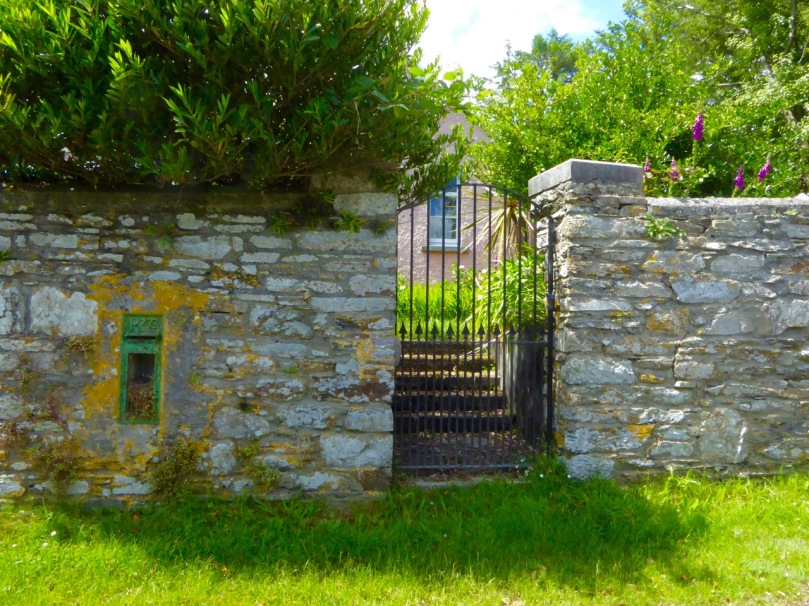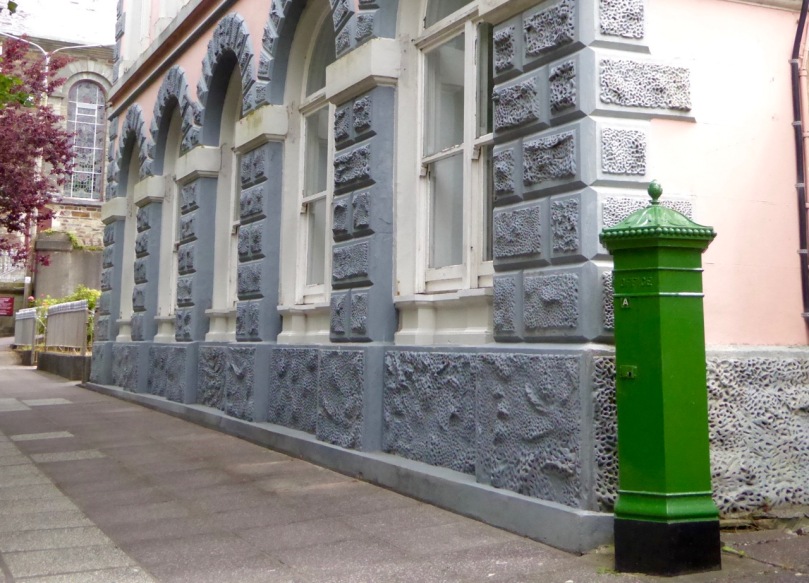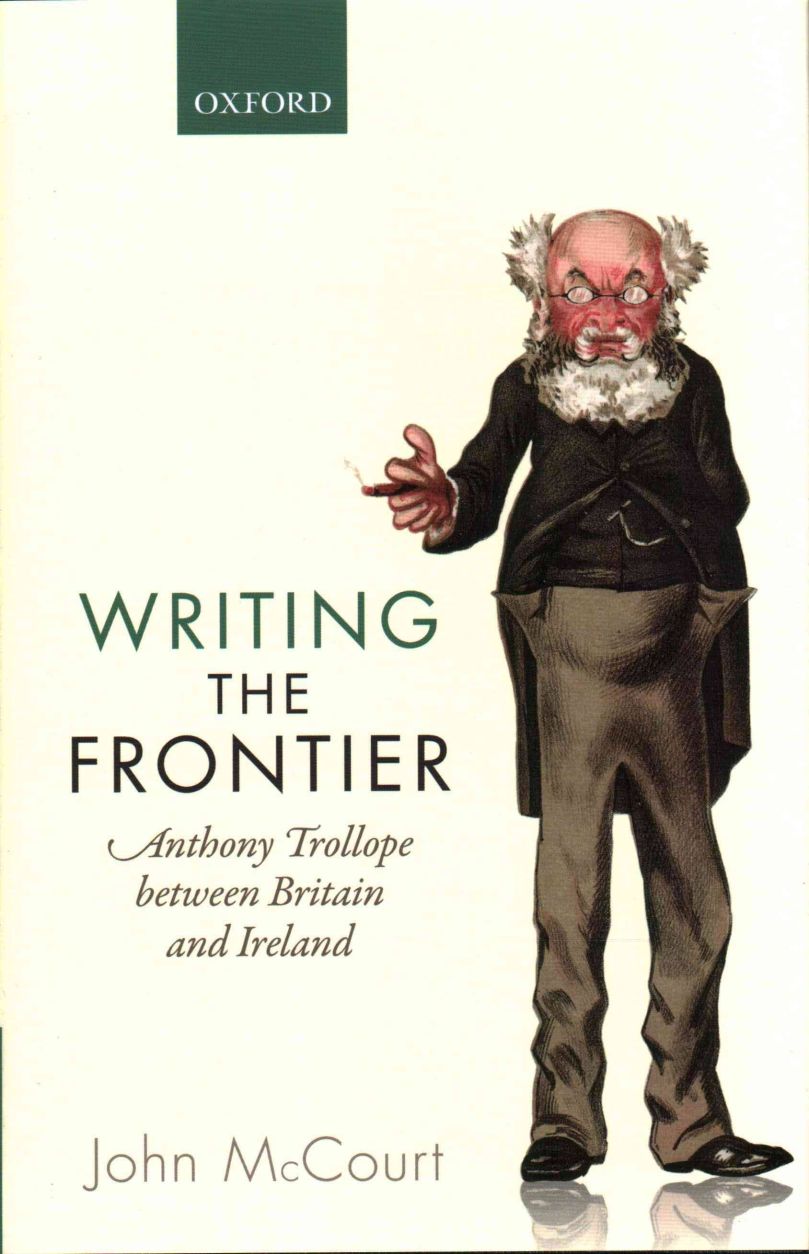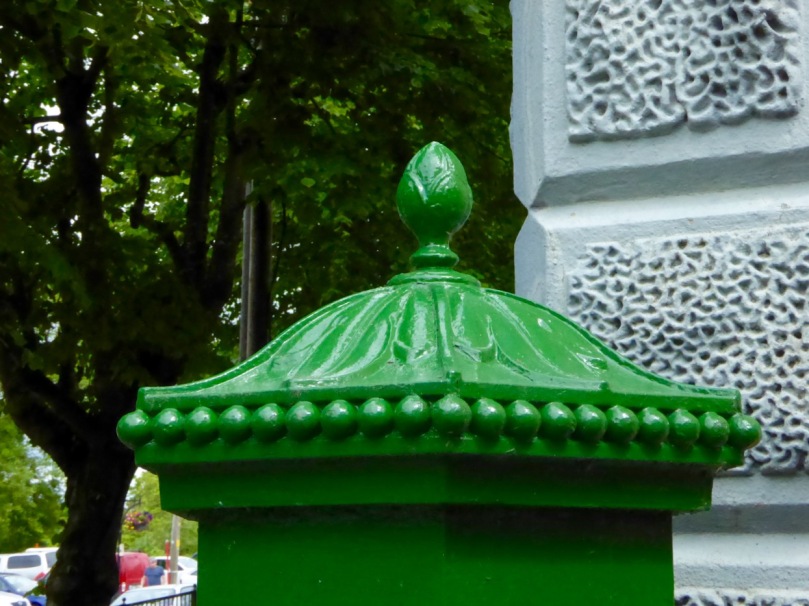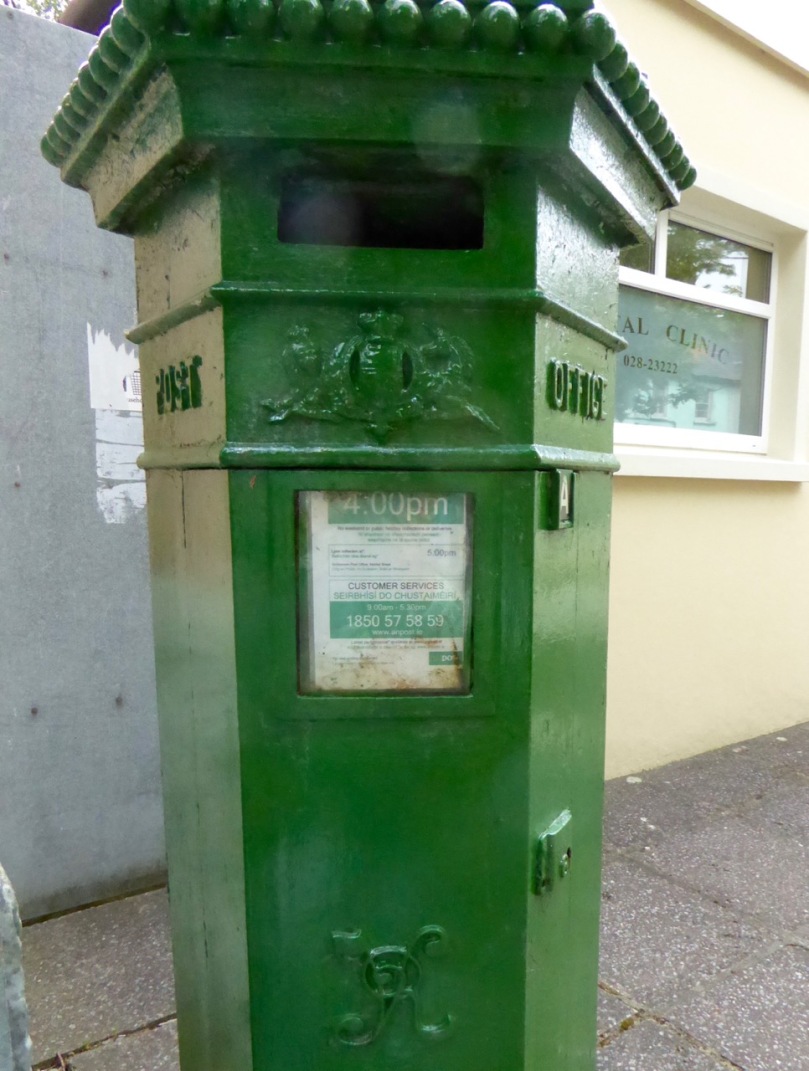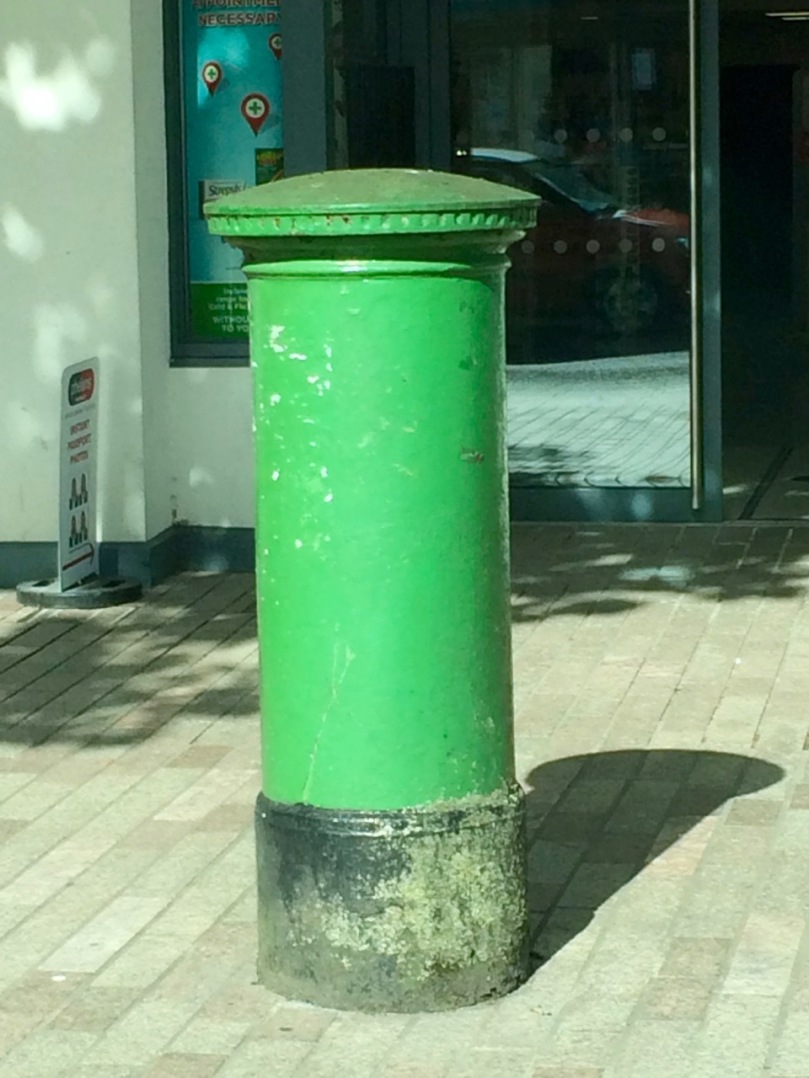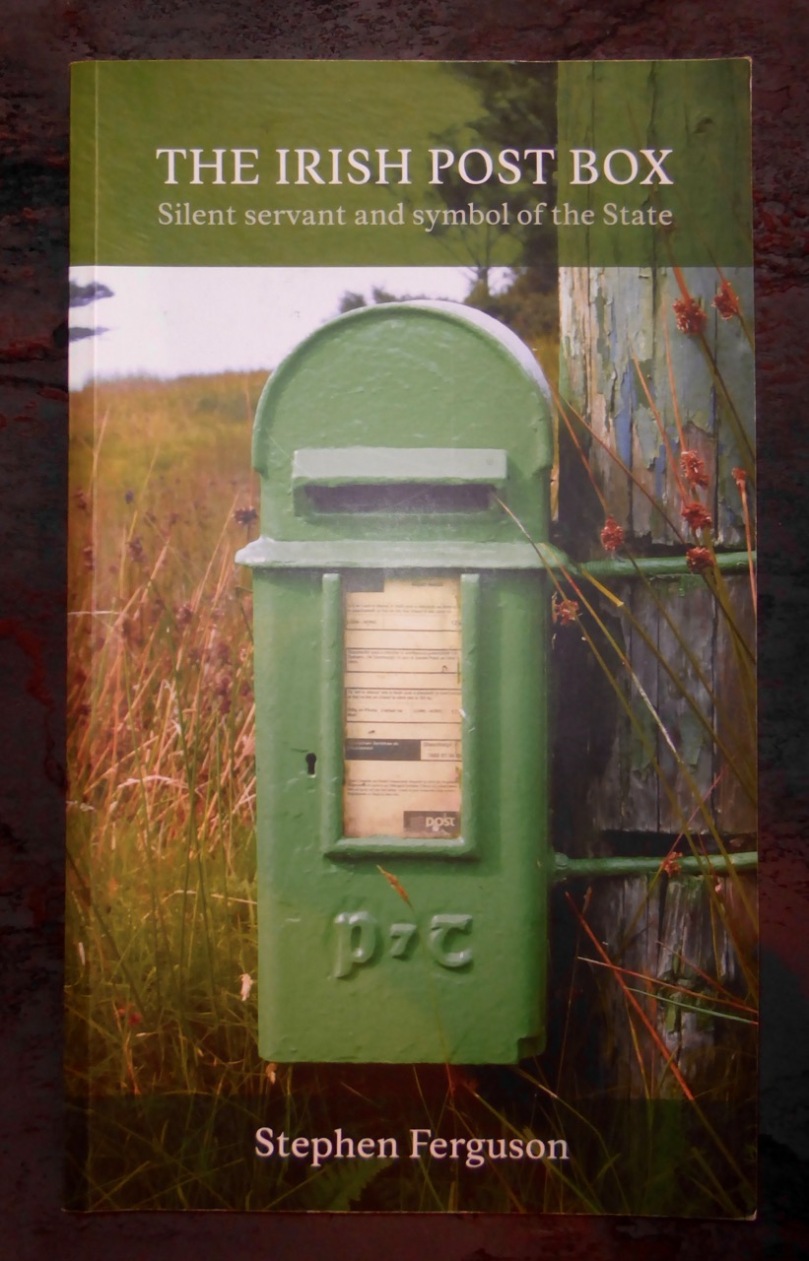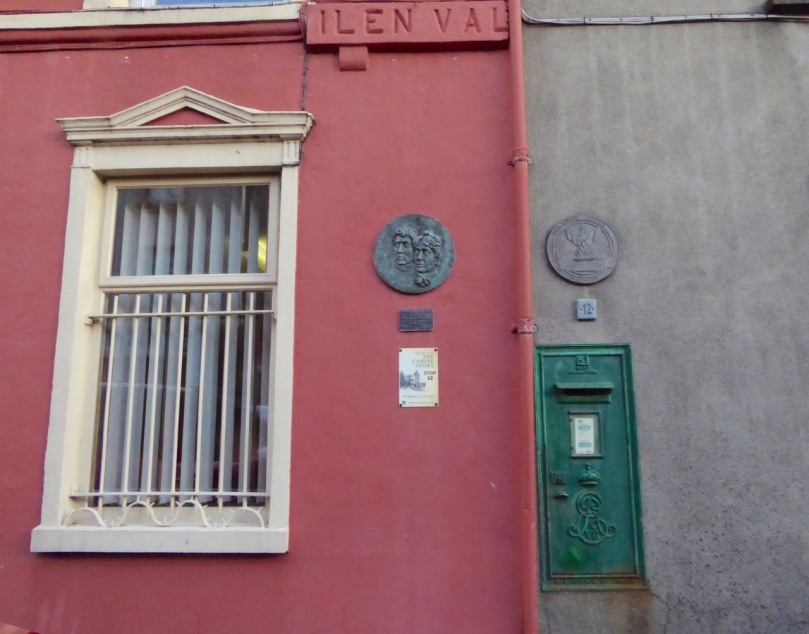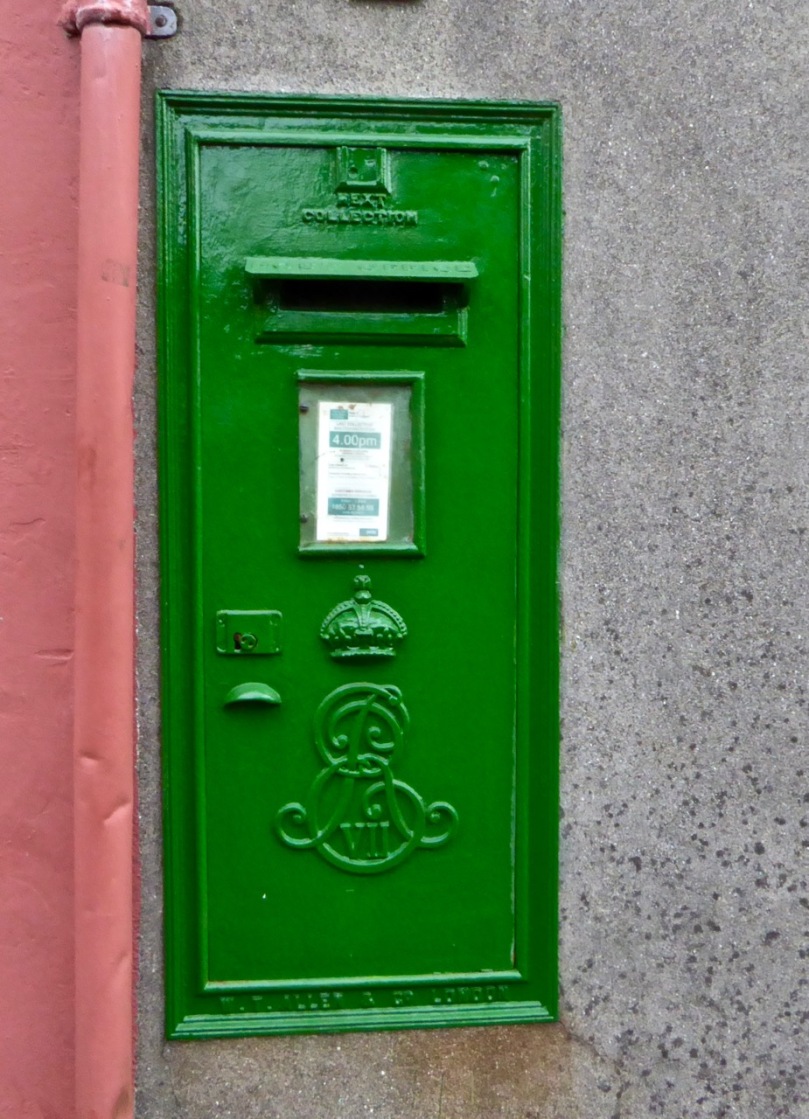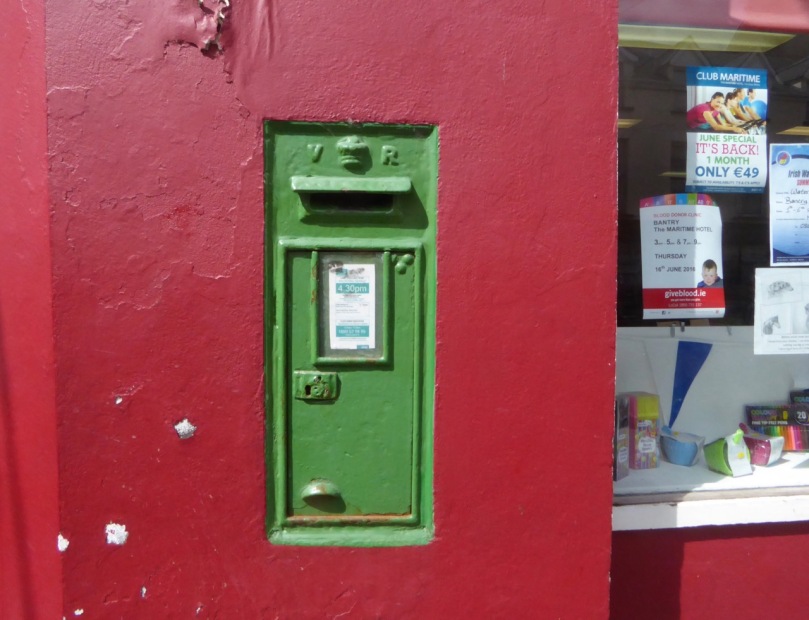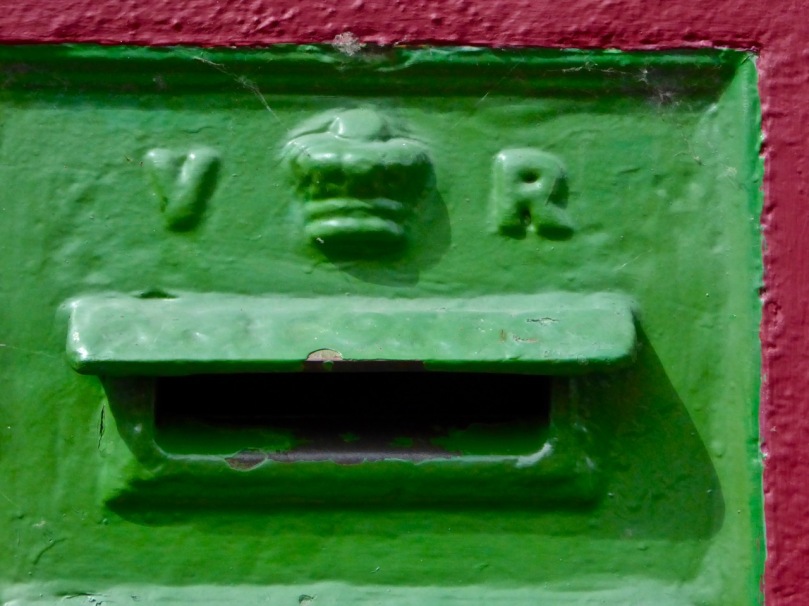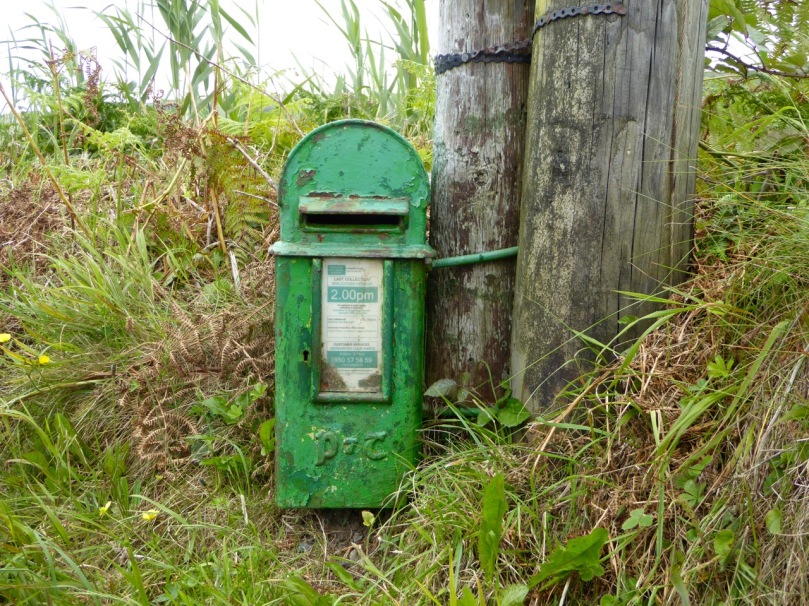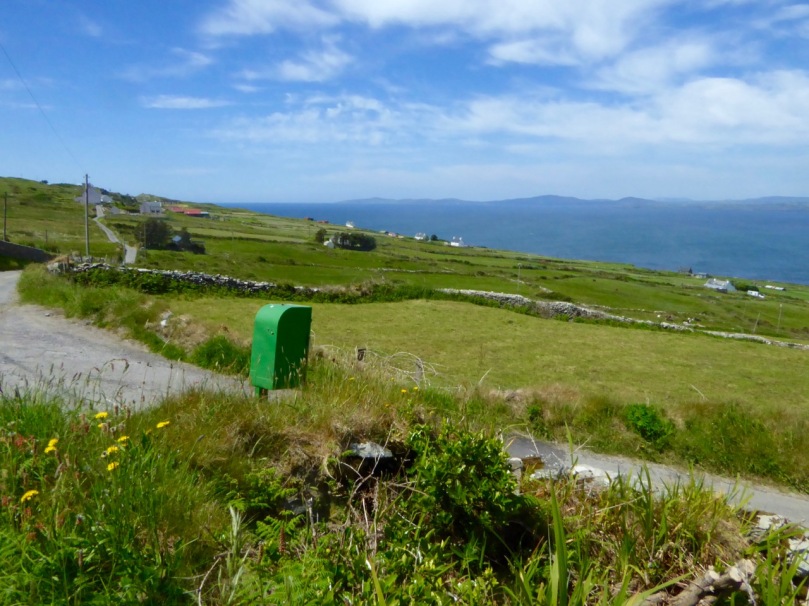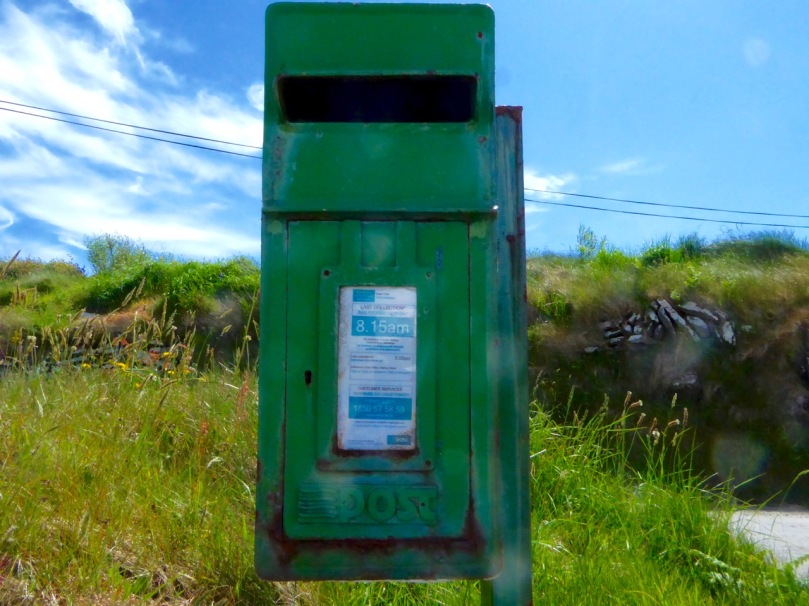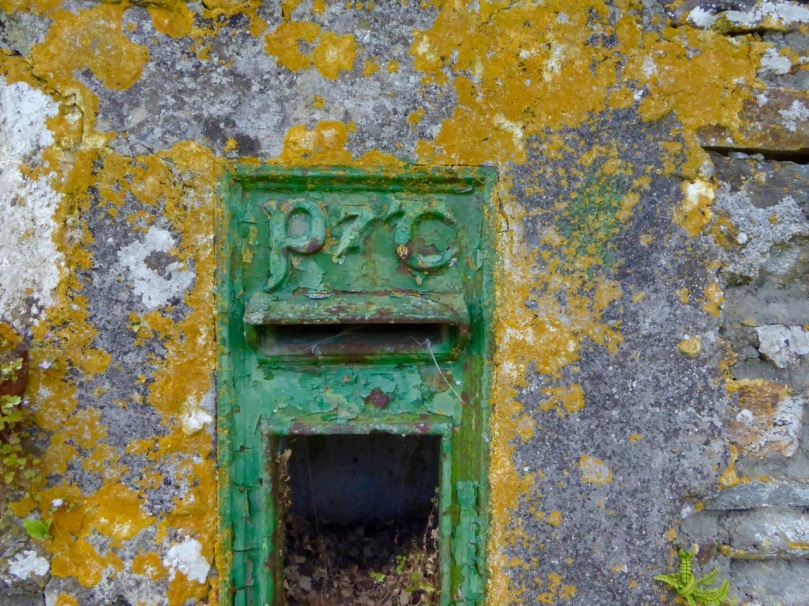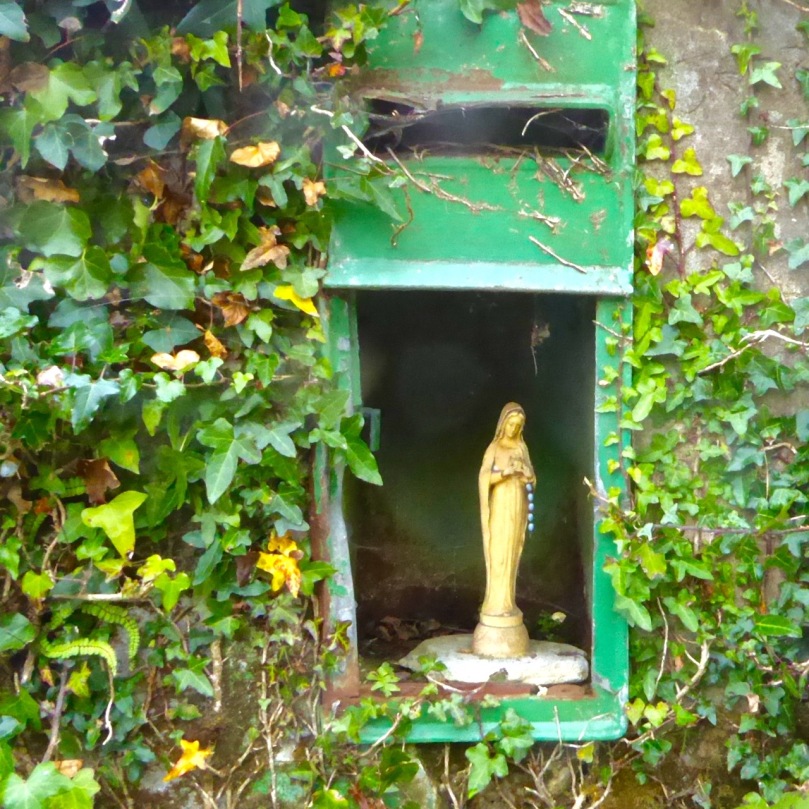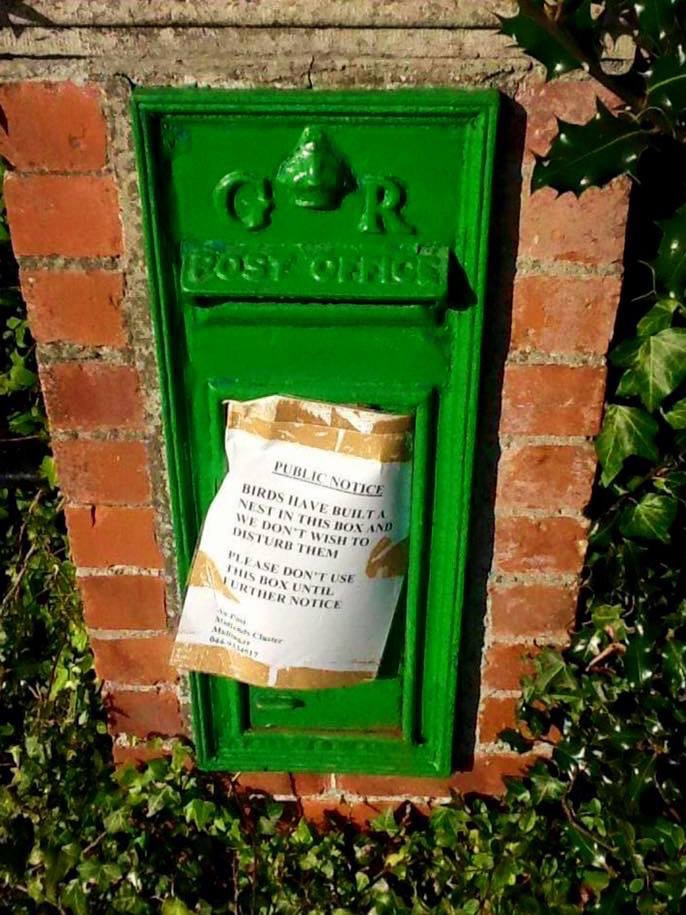 |
|
 |
|
| Introduced | 1879, renamed as Paddy in 1912 |
|---|---|
-

 60cm x 50cm Limerick
60cm x 50cm Limerick
Paddy is a brand of blended Irish whiskey produced by Irish Distillers, at the Midleton distillery in County Cork, on behalf of Sazerac, a privately held American company. Irish distillers owned the brand until its sale to Sazerac in 2016. As of 2016, Paddy is the fourth largest selling Irish whiskey in the WorldHistory The Cork Distilleries Company was founded in 1867 to merge four existing distilleries in Cork city (the North Mall, the Green, Watercourse Road, and Daly's) under the control of one group.A fifth distillery, the Midleton distillery, joined the group soon after in 1868. In 1882, the company hired a young Corkman called Paddy Flaherty as a salesman. Flaherty travelled the pubs of Cork marketing the company's unwieldy named "Cork Distilleries Company Old Irish Whiskey".His sales techniques (which including free rounds of drinks for customers) were so good, that when publicans ran low on stock they would write the distillery to reorder cases of "Paddy Flaherty's whiskey". In 1912, with his name having become synonymous with the whiskey, the distillery officially renamed the whiskey Paddy Irish Whiskey in his honour. In 1920s and 1930s in Ireland, whiskey was sold in casks from the distillery to wholesalers, who would in turn sell it on to publicans.To prevent fluctuations in quality due to middlemen diluting their casks, Cork Distilleries Company decided to bottle their own whiskey known as Paddy, becoming one of the first to do so. In 1988, following an unsolicited takeover offer by Grand Metropolitan, Irish Distillers approached Pernod Ricard and subsequently became a subsidiary of the French drinks conglomerate, following a friendly takeover bid. In 2016, Pernod Ricard sold the Paddy brand to Sazerac, a privately held American firm for an undisclosed fee. Pernod Ricard stated that the sale was in order "simplify" their portfolio, and allow for more targeted investment in their other Irish whiskey brands, such as Jameson and Powers. At the time of the sale, Paddy was the fourth largest selling Irish whiskey brand in the world, with sales of 200,000 9-litre cases per annum, across 28 countries worldwide. Paddy whiskey is distilled three times and matured in oak casks for up to seven years.Compared with other Irish whiskeys, Paddy has a comparatively low pot still content and a high malt content in its blend. Jim Murray, author of the Whiskey bible, has rated Paddy as "one of the softest of all Ireland's whiskeys". -

 47cm x 37cm Limerick The building itself it is a terraced eight-bay four-storey late-Victorian commercial building, It was built across 1895 and 1896 for J McCarthy and Sons, Wholesale Tea and Wine Merchants. Named the Clancarty (family of Carty) Buildings, the building was designed by architect and built by John Delaney. The Cork Examiner on 10 August 1896 (p.9) describes the impressive building: “No person passing through George’s street, can fail to see and admire the beautiful structure, which has just been completed. The facade is 54 feet long and 48 feet high, divided into four storeys, with round headed windows in the classic style, and extends more than the whole length of George’s Street, as between Cook street and Marlboro Street. The ground floor is divided by handsome wrought pilasters and consoles, each console decorated with floral swags, with a richly-moulded dental cornice immediately over the facia. This basement is perfectly fire proof, the walls being built of brick and cement, whilst the ceiling and floor over are composed of a solid block of concrete. The first, second and third floors immediately overhead are altogether occupied by the firm as warerooms to meet the requirements of their immense business as tea and wine merchants and whiskey shippers, the growth of which necessitates this great extension of their premises”.
47cm x 37cm Limerick The building itself it is a terraced eight-bay four-storey late-Victorian commercial building, It was built across 1895 and 1896 for J McCarthy and Sons, Wholesale Tea and Wine Merchants. Named the Clancarty (family of Carty) Buildings, the building was designed by architect and built by John Delaney. The Cork Examiner on 10 August 1896 (p.9) describes the impressive building: “No person passing through George’s street, can fail to see and admire the beautiful structure, which has just been completed. The facade is 54 feet long and 48 feet high, divided into four storeys, with round headed windows in the classic style, and extends more than the whole length of George’s Street, as between Cook street and Marlboro Street. The ground floor is divided by handsome wrought pilasters and consoles, each console decorated with floral swags, with a richly-moulded dental cornice immediately over the facia. This basement is perfectly fire proof, the walls being built of brick and cement, whilst the ceiling and floor over are composed of a solid block of concrete. The first, second and third floors immediately overhead are altogether occupied by the firm as warerooms to meet the requirements of their immense business as tea and wine merchants and whiskey shippers, the growth of which necessitates this great extension of their premises”.
J McCarthy and Sons, Wholesale Tea and Wine Merchants as shown in Goads Insurance Map of Cork, 1906 (source: Kieran McCarthy) 
Description of Clancarty Buildings, Cork Examiner, 10 August 1896, p.9 (source: Cork City Library) -

 47cm x 37cm Limerick The building itself it is a terraced eight-bay four-storey late-Victorian commercial building, It was built across 1895 and 1896 for J McCarthy and Sons, Wholesale Tea and Wine Merchants. Named the Clancarty (family of Carty) Buildings, the building was designed by architect and built by John Delaney. The Cork Examiner on 10 August 1896 (p.9) describes the impressive building: “No person passing through George’s street, can fail to see and admire the beautiful structure, which has just been completed. The facade is 54 feet long and 48 feet high, divided into four storeys, with round headed windows in the classic style, and extends more than the whole length of George’s Street, as between Cook street and Marlboro Street. The ground floor is divided by handsome wrought pilasters and consoles, each console decorated with floral swags, with a richly-moulded dental cornice immediately over the facia. This basement is perfectly fire proof, the walls being built of brick and cement, whilst the ceiling and floor over are composed of a solid block of concrete. The first, second and third floors immediately overhead are altogether occupied by the firm as warerooms to meet the requirements of their immense business as tea and wine merchants and whiskey shippers, the growth of which necessitates this great extension of their premises”.
47cm x 37cm Limerick The building itself it is a terraced eight-bay four-storey late-Victorian commercial building, It was built across 1895 and 1896 for J McCarthy and Sons, Wholesale Tea and Wine Merchants. Named the Clancarty (family of Carty) Buildings, the building was designed by architect and built by John Delaney. The Cork Examiner on 10 August 1896 (p.9) describes the impressive building: “No person passing through George’s street, can fail to see and admire the beautiful structure, which has just been completed. The facade is 54 feet long and 48 feet high, divided into four storeys, with round headed windows in the classic style, and extends more than the whole length of George’s Street, as between Cook street and Marlboro Street. The ground floor is divided by handsome wrought pilasters and consoles, each console decorated with floral swags, with a richly-moulded dental cornice immediately over the facia. This basement is perfectly fire proof, the walls being built of brick and cement, whilst the ceiling and floor over are composed of a solid block of concrete. The first, second and third floors immediately overhead are altogether occupied by the firm as warerooms to meet the requirements of their immense business as tea and wine merchants and whiskey shippers, the growth of which necessitates this great extension of their premises”.
J McCarthy and Sons, Wholesale Tea and Wine Merchants as shown in Goads Insurance Map of Cork, 1906 (source: Kieran McCarthy) 
Description of Clancarty Buildings, Cork Examiner, 10 August 1896, p.9 (source: Cork City Library) -

 24cm x 40cm The Green Distillery was an Irish whiskey distillery which was established in Cork City, Ireland in 1796. In 1867, the distillery was purchased by the Cork Distilleries Company (CDC), in an amalgamation of five Cork distilleries.Production of whiskey at the distillery likely ceased soon afters its acquisition by the CDC.However, the distillery is known to have remained in use a bonded store by the Cork Distilleries Company for several years thereafter.In the mid-twentieth century, the distillery resumed operations as a gin distillery for a period of time, however, it has since been almost completely demolished. The distillery was notable for its use of an early continuous distillation apparatus, invented by the distillery's then co-owner, Joseph Shee. The distillery began life on 12 May 1796, when two distillers, Robert Allan and Denis Corcoran purchased a dwelling house and maltings on North York Street (now Thomas Davis Street) from Bartholomew Foley, a draper. The malthouse had formerly been owned by Thomas Wood, a maltster, in 1780. In 1802, the Allan and Corcoran are recorded as working a 762 gallon still. In the years that followed, the distillery seems to have changed hands several times. Around 1812, the business was being run by two brothers, Thomas and Joseph Shee, Benjamin Hodges, and some others.Thomas Shee acted as the distiller working a 201 gallon still, while Joseph acted a marketing agent based in London.Hodges and the others may have been silent partners who provided capital but nothing else, as their connection with the distillery soon disappeared. Output was recorded at 100,000 gallons in 1828.In June 1830, the Shees entered financial difficulties, and ownership passed to Joseph Shee. Joseph continued operations using capital provided by James Kiernan under a mortgage, while Thomas Shee remained on as a distiller.In 1833, excise records show that the distillery paid a duty charge of £26,716, which equated to about 160,000 gallons proof.By 1835, Kiernan took outright control of the distillery. When Kiernan died in December 1844, his will specified that the distillery should be put up for sale. It was purchased on 27 July 1845 by George Waters, who was previously a co-owner of Daly's Distillery on John Street, until the dissolution of the partnership following the death of one of the partners. Waters ran the distillery until his retirement around 1867, after which the distillery was purchased by the Cork Distilleries Company (CDC), in an amalgamation of five Cork distilleries. Under CDC, distilling ceased at the distillery in the 1880s, with production transferred to their nearby North Mall distillery. Subsequently, the Green Distillery was used as a bonded store for some time.However, in the mid-twentieth century, new equipment was installed in the Green Distillery, with production of gin occurring there for a period of time. According to Irish Distillers, who absorbed the Cork Distilleries Company in the 1960s, a warehouse on the site was used to store whiskey in bond until the 1980s.Since then, the distillery has been almost completely demolished, with only a small archway remaining. However, one of original pot stills is still in use, currently employed as an experimental still at the nearby New Midleton Distillery.
24cm x 40cm The Green Distillery was an Irish whiskey distillery which was established in Cork City, Ireland in 1796. In 1867, the distillery was purchased by the Cork Distilleries Company (CDC), in an amalgamation of five Cork distilleries.Production of whiskey at the distillery likely ceased soon afters its acquisition by the CDC.However, the distillery is known to have remained in use a bonded store by the Cork Distilleries Company for several years thereafter.In the mid-twentieth century, the distillery resumed operations as a gin distillery for a period of time, however, it has since been almost completely demolished. The distillery was notable for its use of an early continuous distillation apparatus, invented by the distillery's then co-owner, Joseph Shee. The distillery began life on 12 May 1796, when two distillers, Robert Allan and Denis Corcoran purchased a dwelling house and maltings on North York Street (now Thomas Davis Street) from Bartholomew Foley, a draper. The malthouse had formerly been owned by Thomas Wood, a maltster, in 1780. In 1802, the Allan and Corcoran are recorded as working a 762 gallon still. In the years that followed, the distillery seems to have changed hands several times. Around 1812, the business was being run by two brothers, Thomas and Joseph Shee, Benjamin Hodges, and some others.Thomas Shee acted as the distiller working a 201 gallon still, while Joseph acted a marketing agent based in London.Hodges and the others may have been silent partners who provided capital but nothing else, as their connection with the distillery soon disappeared. Output was recorded at 100,000 gallons in 1828.In June 1830, the Shees entered financial difficulties, and ownership passed to Joseph Shee. Joseph continued operations using capital provided by James Kiernan under a mortgage, while Thomas Shee remained on as a distiller.In 1833, excise records show that the distillery paid a duty charge of £26,716, which equated to about 160,000 gallons proof.By 1835, Kiernan took outright control of the distillery. When Kiernan died in December 1844, his will specified that the distillery should be put up for sale. It was purchased on 27 July 1845 by George Waters, who was previously a co-owner of Daly's Distillery on John Street, until the dissolution of the partnership following the death of one of the partners. Waters ran the distillery until his retirement around 1867, after which the distillery was purchased by the Cork Distilleries Company (CDC), in an amalgamation of five Cork distilleries. Under CDC, distilling ceased at the distillery in the 1880s, with production transferred to their nearby North Mall distillery. Subsequently, the Green Distillery was used as a bonded store for some time.However, in the mid-twentieth century, new equipment was installed in the Green Distillery, with production of gin occurring there for a period of time. According to Irish Distillers, who absorbed the Cork Distilleries Company in the 1960s, a warehouse on the site was used to store whiskey in bond until the 1980s.Since then, the distillery has been almost completely demolished, with only a small archway remaining. However, one of original pot stills is still in use, currently employed as an experimental still at the nearby New Midleton Distillery.Notability
The distillery was home to an early continuous distillation apparatus, was which installed and used at the distillery for almost twenty years. The apparatus, which the distiller's co-owner, Joseph Shee, patented in 1834, was similar to Jean‐Édouard Adam's 1801 design, and consisted of a four pot stills connected in series. Though thought to have been effective, the apparatus was not widely adopted. In particular, as a more efficient apparatus, the Coffey Still was patented by another Irish distiller, Aeneas Coffey, in 1830.Daly's Distillery was an Irish whiskey distillery which operated in Cork City, Ireland from around 1820 to 1869. In 1867, the distillery was purchased by the Cork Distilleries Company (CDC), in an amalgamation of five cork distilleries. Two years later, in 1869, as the smallest CDC distillery, Daly's Distillery ceased operations. In the years that followed its closure, some of the buildings became part of Shaw's Flour Mill, and Murphy's Brewery, with others continuing to be used as warehouses by Cork Distilleries Company for several years (though information is difficult to come by, their continued existence is mentioned in Alfred Barnard's 1887 account of the distilleries of the United Kingdom).History
In 1798, the firm of James Daly & Co. was established as a rectifying distillery and wine merchants at a premises on Blarney St., Cork. In 1820, this was relocated to 32 John Street.As some sources state that the John distillery was established in 1807, and it is known that a William Lyons ran a distillery on John Street in the early 1800s, it is possible that Daly purchased an existing distillery on John Street. In 1822, James Daly's nephew John Murray joined the partnership. In 1828, the distillery is reported to have an output of 87,874 gallons of spirit.However, in 1833, output of only 39,000 gallons per annum was reported, which was low compared with some of the Irish distillers of the era; for instance, at that time Murphy's Distillery in nearby Midleton, had an output of over 400,000 gallons per annum. On James Daly's death, in 1850, the partnership, which at that point had consisted of James Daly, Maurice Murray (John Murray's son) and George Waters, was dissolved, with Maurice Murray taking sole ownership of the distillery, which continued to trade as James Daly & Co. After leaving the partnership, George Waters went on to purchase and run the nearby Green distillery. In 1853, Murray rebuilt and significantly extended the distillery, expanding onto neighbouring streets. By the late 1860s, the distillery had grown to occupy 3 acres, consisting of a brewhouse, distillery and maltings on John Street; granaries on Leitrim Street; and eight bonded warehouses scattered across John Street, Leitrim Street and Watercourse Road.According to accounts from the time, whiskey from the distillery, some of which was aged for seven years or more, was mainly exported "to the colonies".In particular, it was said that in Australia the whiskey sold at a premium to other whiskeys. A well respected member of the Irish distilling industry at the time, the distillery's owner Maurice Murray, conducted significant correspondence with William Ewart Gladstone, the then British Chancellor of the Exchequer, on behalf of the Irish distillers, with regard to the duties placed on Irish whiskey. In 1867, Daly's Distillery, was absorbed into Cork Distilleries Company (CDC), in an amalgamation of five Cork distilleries. As the smallest of the five distilleries, Daly's closed soon after the amalgamation, in 1869. Following its closure, Maurice Murray is known to have continued to work for the CDC at the North Mall Distillery, along with his son Daly Murray. The main distillery buildings later became part of Shaw's Flour Mill, while other buildings were incorporated into the nearby Murphy's Brewery, which was run by relatives of James Murphy of the Midleton Distillery, who was the driving force behind the establishment of the Cork Distilleries Company. One of the distillery buildings, now named "the Mill", is still visible on 32 Lower John Street, Cork. -

 92cm x 72cm x 7cm Cork Magnificently offset framed original 1940s Midleton distillery Showcard.A most unusual and rare collectors item that will only appreciate in value over time.
92cm x 72cm x 7cm Cork Magnificently offset framed original 1940s Midleton distillery Showcard.A most unusual and rare collectors item that will only appreciate in value over time.THE MIDLETON DISTILLERY
Founded in 1825 by the Murphy brothers in the county of Cork in the Republic of Ireland, the Midleton distillery produces a whiskey faithful to Irish traditions and expertise. One has to go back in history to understand the extent to which Midleton was a determining factor in the current profile of Irish whiskey.
1825: CREATION OF THE DISTILLERY.
The Murphy brothers, James, Daniel and Jeremiah, opened their first distillery, Old Midleton, half way between Cork and Youghal.
1912: THE BIRTH OF REDBREAST WHISKEY.
The first bottles of ‘Redbreast’ were sold by Gilbeys and contained an ‘Irish single malt’ produced by Jameson & Sons.
1966: THE IRISH WHISKEY RENAISSANCE
At this time, there were only three surviving distilleries in the Republic of Ireland (John Jameson & Son and John Power & Son in Dublin, and the Cork Distillery Company in Cork). In that year they merged and created the United Distillers of Ireland group which, seven years later, became Irish Distillers Ltd.
1975: MIDLETON BECOMES THE FUTURE.
Irish Distillers Ltd decided to close its poorly located distilleries in Dublin and open a new one on the Midleton site. Midleton was equipped with three column stills and four pot stills. -

 49cm x 38cm William Clarke & Son was a tobacco company that was founded in 1830 at South Main Street, Cork, Ireland. In January 1924, following the formation of the Irish Free State, the United Kingdom trade of William Clarke & Son was transferred to Dublin and taken over by Ogden's.
49cm x 38cm William Clarke & Son was a tobacco company that was founded in 1830 at South Main Street, Cork, Ireland. In January 1924, following the formation of the Irish Free State, the United Kingdom trade of William Clarke & Son was transferred to Dublin and taken over by Ogden's.William Clarke & Son, Dublin
William Clarke was founded in 1830 at South Main Street in Cork, however by 1870 the manufacturing side of the business had all been transferred to Hare Place, Scotland Road, Liverpool, with only depots remaining in Ireland. Following the formation of the Irish Free State in 1926, the Liverpool based operation was taken over by Ogden’s, while a new factory was set up at South Circular Road in Dublin to produce tobacco and snuff under the William Clarke & Son brand. In 1929 William Clarke was amalgamated with Wills’s Irish branch, which resulted in Wills’s Irish production being integrated into the new South Circular Road factory in Dublin, though senior management were based in Wills’s Bristol operations and the Irish entity ultimately reported back into Bristol. -

 45cm x 34cm Aer Lingus was founded on 15 April 1936, with a capital of £100,000. Its first chairman was Seán Ó hUadhaigh.Pending legislation for Government investment through a parent company, Aer Lingus was associated with Blackpool and West Coast Air Services which advanced the money for the first aircraft, and operated with Aer Lingus under the common title "Irish Sea Airways". Aer Lingus Teoranta was registered as an airline on 22 May 1936.The name Aer Lingus was proposed by Richard F O'Connor, who was County Cork Surveyor, as well as an aviation enthusiast. On 27 May 1936, five days after being registered as an airline, its first service began between Baldonnel Airfield in Dublin and Bristol (Whitchurch) Airport, the United Kingdom, using a six-seater de Havilland DH.84 Dragon biplane (registration EI-ABI), named Iolar (Eagle). Later that year, the airline acquired its second aircraft, a four-engined biplane de Havilland DH.86 Express named "Éire", with a capacity of 14 passengers. This aircraft provided the first air link between Dublin and London by extending the Bristol service to Croydon. At the same time, the DH.84 Dragon was used to inaugurate an Aer Lingus service on the Dublin-Liverpool route. The airline was established as the national carrier under the Air Navigation and Transport Act (1936). In 1937, the Irish government created Aer Rianta (now called Dublin Airport Authority), a company to assume financial responsibility for the new airline and the entire country's civil aviation infrastructure. In April 1937, Aer Lingus became wholly owned by the Irish government via Aer Rianta. The airline's first General Manager was Dr J.F. (Jeremiah known as 'Jerry') Dempsey, a chartered accountant, who joined the company on secondment from Kennedy Crowley & Co (predecessor to KPMG as Company Secretary in 1936 (aged 30) and was appointed to the role of General Manager in 1937. He retired 30 years later in 1967 at the age of 60. In 1938, a de Havilland DH.89 Dragon Rapide replaced Iolar, and the company purchased a second DH.86B. Two Lockheed 14s arrived in 1939, Aer Lingus' first all-metal aircraft.In January 1940, a new airport opened in the Dublin suburb of Collinstown and Aer Lingus moved its operations there. It purchased a new DC-3 and inaugurated new services to Liverpool and an internal service to Shannon. The airline's services were curtailed during World War II with the sole route being to Liverpool or Barton Aerodrome Manchester depending on the fluctuating security situation.
45cm x 34cm Aer Lingus was founded on 15 April 1936, with a capital of £100,000. Its first chairman was Seán Ó hUadhaigh.Pending legislation for Government investment through a parent company, Aer Lingus was associated with Blackpool and West Coast Air Services which advanced the money for the first aircraft, and operated with Aer Lingus under the common title "Irish Sea Airways". Aer Lingus Teoranta was registered as an airline on 22 May 1936.The name Aer Lingus was proposed by Richard F O'Connor, who was County Cork Surveyor, as well as an aviation enthusiast. On 27 May 1936, five days after being registered as an airline, its first service began between Baldonnel Airfield in Dublin and Bristol (Whitchurch) Airport, the United Kingdom, using a six-seater de Havilland DH.84 Dragon biplane (registration EI-ABI), named Iolar (Eagle). Later that year, the airline acquired its second aircraft, a four-engined biplane de Havilland DH.86 Express named "Éire", with a capacity of 14 passengers. This aircraft provided the first air link between Dublin and London by extending the Bristol service to Croydon. At the same time, the DH.84 Dragon was used to inaugurate an Aer Lingus service on the Dublin-Liverpool route. The airline was established as the national carrier under the Air Navigation and Transport Act (1936). In 1937, the Irish government created Aer Rianta (now called Dublin Airport Authority), a company to assume financial responsibility for the new airline and the entire country's civil aviation infrastructure. In April 1937, Aer Lingus became wholly owned by the Irish government via Aer Rianta. The airline's first General Manager was Dr J.F. (Jeremiah known as 'Jerry') Dempsey, a chartered accountant, who joined the company on secondment from Kennedy Crowley & Co (predecessor to KPMG as Company Secretary in 1936 (aged 30) and was appointed to the role of General Manager in 1937. He retired 30 years later in 1967 at the age of 60. In 1938, a de Havilland DH.89 Dragon Rapide replaced Iolar, and the company purchased a second DH.86B. Two Lockheed 14s arrived in 1939, Aer Lingus' first all-metal aircraft.In January 1940, a new airport opened in the Dublin suburb of Collinstown and Aer Lingus moved its operations there. It purchased a new DC-3 and inaugurated new services to Liverpool and an internal service to Shannon. The airline's services were curtailed during World War II with the sole route being to Liverpool or Barton Aerodrome Manchester depending on the fluctuating security situation. An Aer Lingus Douglas DC-3 at Manchester Airport in 1948 wearing the first postwar livery.
An Aer Lingus Douglas DC-3 at Manchester Airport in 1948 wearing the first postwar livery.Post-war expansion
On 9 November 1945, regular services were resumed with an inaugural flight to London. From this point Aer Lingus aircraft, initially mostly Douglas DC-3s, were painted in a silver and green livery. The airline introduced its first flight attendants. In 1946, a new Anglo-Irish agreement gave Aer Lingus exclusive UK traffic rights from Ireland in exchange for a 40% holding by British Overseas Airways Corporation (BOAC) and British European Airways (BEA). Because of Aer Lingus' growth the airline bought seven new Vickers Viking aircraft in 1947, however, these proved to be uneconomical and were soon sold.In 1947, Aerlínte Éireann came into existence to operate transatlantic flights to New York City from Ireland. The airline ordered five new Lockheed L-749 Constellations, but a change of government and a financial crisis prevented the service from starting. John A Costello, the incoming Fine Gael Taoiseach (Prime Minister), was not a keen supporter of air travel and thought that flying the Atlantic was too grandiose a scheme for a small airline from a small country like Ireland. A Bristol 170 Freighter at Manchester Airport in 1953.During the late 1940s and early 1950s, Aer Lingus introduced routes to Brussels, Amsterdam via Manchester and to Rome. Because of the expanding route structure, the airline became one of the early purchasers of Vickers Viscount 700s in 1951, which were placed in service in April 1954. In 1952, the airline expanded its all-freight services and acquired a small fleet of Bristol 170 Freighters, which remained in service until 1957. Prof. Patrick Lynch was appointed the chairman of Aer Lingus and Aer Rianta in 1954 and served in the position until 1975. In 1956, Aer Lingus introduced a new, green-top livery with a white lightning flash down the windows and the Irish flag displayed on the fin.
A Bristol 170 Freighter at Manchester Airport in 1953.During the late 1940s and early 1950s, Aer Lingus introduced routes to Brussels, Amsterdam via Manchester and to Rome. Because of the expanding route structure, the airline became one of the early purchasers of Vickers Viscount 700s in 1951, which were placed in service in April 1954. In 1952, the airline expanded its all-freight services and acquired a small fleet of Bristol 170 Freighters, which remained in service until 1957. Prof. Patrick Lynch was appointed the chairman of Aer Lingus and Aer Rianta in 1954 and served in the position until 1975. In 1956, Aer Lingus introduced a new, green-top livery with a white lightning flash down the windows and the Irish flag displayed on the fin. A Vickers Viscount 808 in "green top" livery at Manchester Airport in 1963.
A Vickers Viscount 808 in "green top" livery at Manchester Airport in 1963.First transatlantic service
On 28 April 1958, Aerlínte Éireann operated its first transatlantic service from Shannon to New York.In 1960, Aerlínte Éireann was renamed Aer Lingus. Aer Lingus bought seven Fokker F27 Friendships, which were delivered between November 1958 and May 1959. These were used in short-haul services to the UK, gradually replacing the Dakotas, until Aer Lingus replaced them in 1966 with secondhand Viscount 800s. The airline entered the jet age on 14 December 1960 when it received three Boeing 720 for use on the New York route and the newest Aer Lingus destination Boston. In 1963, Aer Lingus added Aviation Traders Carvairs to the fleet. These aircraft could transport five cars which were loaded into the fuselage through the nose of the aircraft. The Carvair proved to be uneconomical for the airline partly due to the rise of auto ferry services, and the aircraft were used for freight services until disposed of. The Boeing 720s proved to be a success for the airline on the transatlantic routes. To supplement these, Aer Lingus took delivery of its first larger Boeing 707 in 1964, and the type continued to serve the airline until 1986. A Boeing 720 in Aer Lingus-Irish International livery in 1965.
A Boeing 720 in Aer Lingus-Irish International livery in 1965.Jet aircraft
Conversion of the European fleet to jet equipment began in 1965 when the BAC One-Eleven started services on continental Europe.The airline adopted a new livery in the same year, with a large green shamrock on the fin. In 1966, the remainder of the company's shares held by Aer Rianta were transferred to the Minister for Finance. A Fokker F27 Friendship at Manchester Airport in 1965. The F27 was used on short-haul services between 1958 and 1966.In 1966, the company added routes to Montreal and Chicago. In 1968, flights from Belfast, in Northern Ireland, to New York City started, however, it was soon suspended due to the beginning of the Troubles.Aer Lingus introduced Boeing 737s to its fleet in 1969 to cope with the high demand for flights between Dublin and London. Later, Aer Lingus extended the 737 flights to all of its European networks. In 1967, after 30 years of service, General Manager Dr J.F. Dempsey signed the contract for the airline's first two Boeing 747 aircraft before he retired later that year.
A Fokker F27 Friendship at Manchester Airport in 1965. The F27 was used on short-haul services between 1958 and 1966.In 1966, the company added routes to Montreal and Chicago. In 1968, flights from Belfast, in Northern Ireland, to New York City started, however, it was soon suspended due to the beginning of the Troubles.Aer Lingus introduced Boeing 737s to its fleet in 1969 to cope with the high demand for flights between Dublin and London. Later, Aer Lingus extended the 737 flights to all of its European networks. In 1967, after 30 years of service, General Manager Dr J.F. Dempsey signed the contract for the airline's first two Boeing 747 aircraft before he retired later that year. An Aviation Traders Carvair that was used as a vehicle freighter is seen loading a car at Bristol Airport in 1964.
An Aviation Traders Carvair that was used as a vehicle freighter is seen loading a car at Bristol Airport in 1964. -

 48cm x 35cm Aer Lingus was founded on 15 April 1936, with a capital of £100,000. Its first chairman was Seán Ó hUadhaigh.Pending legislation for Government investment through a parent company, Aer Lingus was associated with Blackpool and West Coast Air Services which advanced the money for the first aircraft, and operated with Aer Lingus under the common title "Irish Sea Airways". Aer Lingus Teoranta was registered as an airline on 22 May 1936.The name Aer Lingus was proposed by Richard F O'Connor, who was County Cork Surveyor, as well as an aviation enthusiast. On 27 May 1936, five days after being registered as an airline, its first service began between Baldonnel Airfield in Dublin and Bristol (Whitchurch) Airport, the United Kingdom, using a six-seater de Havilland DH.84 Dragon biplane (registration EI-ABI), named Iolar (Eagle). Later that year, the airline acquired its second aircraft, a four-engined biplane de Havilland DH.86 Express named "Éire", with a capacity of 14 passengers. This aircraft provided the first air link between Dublin and London by extending the Bristol service to Croydon. At the same time, the DH.84 Dragon was used to inaugurate an Aer Lingus service on the Dublin-Liverpool route. The airline was established as the national carrier under the Air Navigation and Transport Act (1936). In 1937, the Irish government created Aer Rianta (now called Dublin Airport Authority), a company to assume financial responsibility for the new airline and the entire country's civil aviation infrastructure. In April 1937, Aer Lingus became wholly owned by the Irish government via Aer Rianta. The airline's first General Manager was Dr J.F. (Jeremiah known as 'Jerry') Dempsey, a chartered accountant, who joined the company on secondment from Kennedy Crowley & Co (predecessor to KPMG as Company Secretary in 1936 (aged 30) and was appointed to the role of General Manager in 1937. He retired 30 years later in 1967 at the age of 60. In 1938, a de Havilland DH.89 Dragon Rapide replaced Iolar, and the company purchased a second DH.86B. Two Lockheed 14s arrived in 1939, Aer Lingus' first all-metal aircraft.In January 1940, a new airport opened in the Dublin suburb of Collinstown and Aer Lingus moved its operations there. It purchased a new DC-3 and inaugurated new services to Liverpool and an internal service to Shannon. The airline's services were curtailed during World War II with the sole route being to Liverpool or Barton Aerodrome Manchester depending on the fluctuating security situation.
48cm x 35cm Aer Lingus was founded on 15 April 1936, with a capital of £100,000. Its first chairman was Seán Ó hUadhaigh.Pending legislation for Government investment through a parent company, Aer Lingus was associated with Blackpool and West Coast Air Services which advanced the money for the first aircraft, and operated with Aer Lingus under the common title "Irish Sea Airways". Aer Lingus Teoranta was registered as an airline on 22 May 1936.The name Aer Lingus was proposed by Richard F O'Connor, who was County Cork Surveyor, as well as an aviation enthusiast. On 27 May 1936, five days after being registered as an airline, its first service began between Baldonnel Airfield in Dublin and Bristol (Whitchurch) Airport, the United Kingdom, using a six-seater de Havilland DH.84 Dragon biplane (registration EI-ABI), named Iolar (Eagle). Later that year, the airline acquired its second aircraft, a four-engined biplane de Havilland DH.86 Express named "Éire", with a capacity of 14 passengers. This aircraft provided the first air link between Dublin and London by extending the Bristol service to Croydon. At the same time, the DH.84 Dragon was used to inaugurate an Aer Lingus service on the Dublin-Liverpool route. The airline was established as the national carrier under the Air Navigation and Transport Act (1936). In 1937, the Irish government created Aer Rianta (now called Dublin Airport Authority), a company to assume financial responsibility for the new airline and the entire country's civil aviation infrastructure. In April 1937, Aer Lingus became wholly owned by the Irish government via Aer Rianta. The airline's first General Manager was Dr J.F. (Jeremiah known as 'Jerry') Dempsey, a chartered accountant, who joined the company on secondment from Kennedy Crowley & Co (predecessor to KPMG as Company Secretary in 1936 (aged 30) and was appointed to the role of General Manager in 1937. He retired 30 years later in 1967 at the age of 60. In 1938, a de Havilland DH.89 Dragon Rapide replaced Iolar, and the company purchased a second DH.86B. Two Lockheed 14s arrived in 1939, Aer Lingus' first all-metal aircraft.In January 1940, a new airport opened in the Dublin suburb of Collinstown and Aer Lingus moved its operations there. It purchased a new DC-3 and inaugurated new services to Liverpool and an internal service to Shannon. The airline's services were curtailed during World War II with the sole route being to Liverpool or Barton Aerodrome Manchester depending on the fluctuating security situation. An Aer Lingus Douglas DC-3 at Manchester Airport in 1948 wearing the first postwar livery.
An Aer Lingus Douglas DC-3 at Manchester Airport in 1948 wearing the first postwar livery.Post-war expansion
On 9 November 1945, regular services were resumed with an inaugural flight to London. From this point Aer Lingus aircraft, initially mostly Douglas DC-3s, were painted in a silver and green livery. The airline introduced its first flight attendants. In 1946, a new Anglo-Irish agreement gave Aer Lingus exclusive UK traffic rights from Ireland in exchange for a 40% holding by British Overseas Airways Corporation (BOAC) and British European Airways (BEA). Because of Aer Lingus' growth the airline bought seven new Vickers Viking aircraft in 1947, however, these proved to be uneconomical and were soon sold.In 1947, Aerlínte Éireann came into existence to operate transatlantic flights to New York City from Ireland. The airline ordered five new Lockheed L-749 Constellations, but a change of government and a financial crisis prevented the service from starting. John A Costello, the incoming Fine Gael Taoiseach (Prime Minister), was not a keen supporter of air travel and thought that flying the Atlantic was too grandiose a scheme for a small airline from a small country like Ireland. A Bristol 170 Freighter at Manchester Airport in 1953.During the late 1940s and early 1950s, Aer Lingus introduced routes to Brussels, Amsterdam via Manchester and to Rome. Because of the expanding route structure, the airline became one of the early purchasers of Vickers Viscount 700s in 1951, which were placed in service in April 1954. In 1952, the airline expanded its all-freight services and acquired a small fleet of Bristol 170 Freighters, which remained in service until 1957. Prof. Patrick Lynch was appointed the chairman of Aer Lingus and Aer Rianta in 1954 and served in the position until 1975. In 1956, Aer Lingus introduced a new, green-top livery with a white lightning flash down the windows and the Irish flag displayed on the fin.
A Bristol 170 Freighter at Manchester Airport in 1953.During the late 1940s and early 1950s, Aer Lingus introduced routes to Brussels, Amsterdam via Manchester and to Rome. Because of the expanding route structure, the airline became one of the early purchasers of Vickers Viscount 700s in 1951, which were placed in service in April 1954. In 1952, the airline expanded its all-freight services and acquired a small fleet of Bristol 170 Freighters, which remained in service until 1957. Prof. Patrick Lynch was appointed the chairman of Aer Lingus and Aer Rianta in 1954 and served in the position until 1975. In 1956, Aer Lingus introduced a new, green-top livery with a white lightning flash down the windows and the Irish flag displayed on the fin. A Vickers Viscount 808 in "green top" livery at Manchester Airport in 1963.
A Vickers Viscount 808 in "green top" livery at Manchester Airport in 1963.First transatlantic service
On 28 April 1958, Aerlínte Éireann operated its first transatlantic service from Shannon to New York.In 1960, Aerlínte Éireann was renamed Aer Lingus. Aer Lingus bought seven Fokker F27 Friendships, which were delivered between November 1958 and May 1959. These were used in short-haul services to the UK, gradually replacing the Dakotas, until Aer Lingus replaced them in 1966 with secondhand Viscount 800s. The airline entered the jet age on 14 December 1960 when it received three Boeing 720 for use on the New York route and the newest Aer Lingus destination Boston. In 1963, Aer Lingus added Aviation Traders Carvairs to the fleet. These aircraft could transport five cars which were loaded into the fuselage through the nose of the aircraft. The Carvair proved to be uneconomical for the airline partly due to the rise of auto ferry services, and the aircraft were used for freight services until disposed of. The Boeing 720s proved to be a success for the airline on the transatlantic routes. To supplement these, Aer Lingus took delivery of its first larger Boeing 707 in 1964, and the type continued to serve the airline until 1986. A Boeing 720 in Aer Lingus-Irish International livery in 1965.
A Boeing 720 in Aer Lingus-Irish International livery in 1965.Jet aircraft
Conversion of the European fleet to jet equipment began in 1965 when the BAC One-Eleven started services on continental Europe.The airline adopted a new livery in the same year, with a large green shamrock on the fin. In 1966, the remainder of the company's shares held by Aer Rianta were transferred to the Minister for Finance. A Fokker F27 Friendship at Manchester Airport in 1965. The F27 was used on short-haul services between 1958 and 1966.In 1966, the company added routes to Montreal and Chicago. In 1968, flights from Belfast, in Northern Ireland, to New York City started, however, it was soon suspended due to the beginning of the Troubles.Aer Lingus introduced Boeing 737s to its fleet in 1969 to cope with the high demand for flights between Dublin and London. Later, Aer Lingus extended the 737 flights to all of its European networks. In 1967, after 30 years of service, General Manager Dr J.F. Dempsey signed the contract for the airline's first two Boeing 747 aircraft before he retired later that year.
A Fokker F27 Friendship at Manchester Airport in 1965. The F27 was used on short-haul services between 1958 and 1966.In 1966, the company added routes to Montreal and Chicago. In 1968, flights from Belfast, in Northern Ireland, to New York City started, however, it was soon suspended due to the beginning of the Troubles.Aer Lingus introduced Boeing 737s to its fleet in 1969 to cope with the high demand for flights between Dublin and London. Later, Aer Lingus extended the 737 flights to all of its European networks. In 1967, after 30 years of service, General Manager Dr J.F. Dempsey signed the contract for the airline's first two Boeing 747 aircraft before he retired later that year. An Aviation Traders Carvair that was used as a vehicle freighter is seen loading a car at Bristol Airport in 1964.
An Aviation Traders Carvair that was used as a vehicle freighter is seen loading a car at Bristol Airport in 1964. -
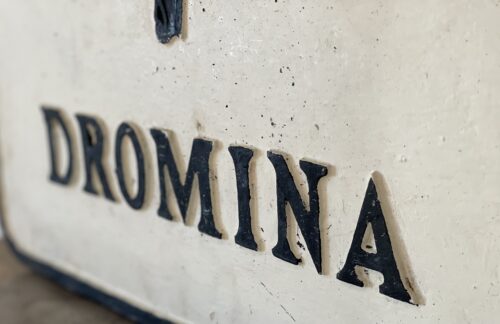
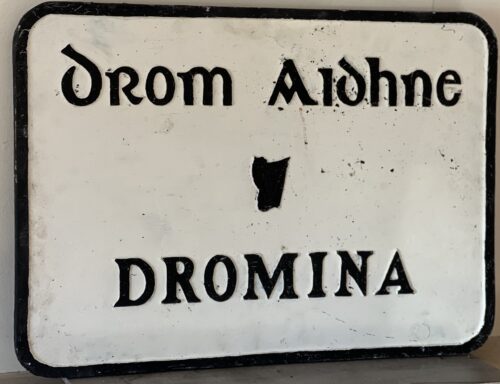
 45cm x 66cm
An absolute once off piece of Irish Memorabilia .We at the Irish Pub Emporium were so lucky to acquire from a private collector who has moved overseas.These superb castiron road signs were commissioned by the Irish Free State in the late 1940s post and were initially the responsibility of the newly formed Irish Tourism Organisation -Fógra Failte (later to become Bord Failte and then Failte Ireland).
"The former 'fingerpost' style of Irish directional signs can still be seen in many rural areas of the Republic of Ireland. These signs differ from their modern-day equivalent as they have black raised text on a white background. Destinations are in all caps (the placename in Irish was on top and in a smaller font than the one in English). Sometimes, the former route number ("T" for trunk road, "L" for link road) can be seen, and the former Bord Fáilte logo can be seen on some (they had responsibility for signs for a time), as well as occasionally a harp. Distances on these signs are in miles.
This style of sign has become a common feature of many tourist images of Ireland and can be seen in some Irish pubs. However, they can be easily rotated, and have been done so on occasion and therefore are not completely reliable. While most examples of these signs still in situ are rural finger-posts, the advance directional sign of this era can still very occasionally be seen: this has a grey background, with the destinations in outlined, white-background boxes linked together with black lines, and the text is not raised on these, unlike on fingerposts. These signs, rare even when the system was in use, can be seen in some areas of Dún Laoghaire and Drogheda. These signs were prescribed under various regulations, with the final design prescribed under the Road Traffic Signs (Regulations) 1962.
Despite the new sign style being introduced in 1977, the design change was never legislated for (apart from a reference to the change to italics in 1989) and the old designs were repealed only under the 1997 regulations, 20 years later.
45cm x 66cm
An absolute once off piece of Irish Memorabilia .We at the Irish Pub Emporium were so lucky to acquire from a private collector who has moved overseas.These superb castiron road signs were commissioned by the Irish Free State in the late 1940s post and were initially the responsibility of the newly formed Irish Tourism Organisation -Fógra Failte (later to become Bord Failte and then Failte Ireland).
"The former 'fingerpost' style of Irish directional signs can still be seen in many rural areas of the Republic of Ireland. These signs differ from their modern-day equivalent as they have black raised text on a white background. Destinations are in all caps (the placename in Irish was on top and in a smaller font than the one in English). Sometimes, the former route number ("T" for trunk road, "L" for link road) can be seen, and the former Bord Fáilte logo can be seen on some (they had responsibility for signs for a time), as well as occasionally a harp. Distances on these signs are in miles.
This style of sign has become a common feature of many tourist images of Ireland and can be seen in some Irish pubs. However, they can be easily rotated, and have been done so on occasion and therefore are not completely reliable. While most examples of these signs still in situ are rural finger-posts, the advance directional sign of this era can still very occasionally be seen: this has a grey background, with the destinations in outlined, white-background boxes linked together with black lines, and the text is not raised on these, unlike on fingerposts. These signs, rare even when the system was in use, can be seen in some areas of Dún Laoghaire and Drogheda. These signs were prescribed under various regulations, with the final design prescribed under the Road Traffic Signs (Regulations) 1962.
Despite the new sign style being introduced in 1977, the design change was never legislated for (apart from a reference to the change to italics in 1989) and the old designs were repealed only under the 1997 regulations, 20 years later. -


 61cm x 69cm
An absolute once off piece of Irish Memorabilia .We at the Irish Pub Emporium were so lucky to acquire from a private collector who has moved overseas.These superb castiron road signs were commissioned by the Irish Free State in the late 1940s post and were initially the responsibility of the newly formed Irish Tourism Organisation -Fógra Failte (later to become Bord Failte and then Failte Ireland).
"The former 'fingerpost' style of Irish directional signs can still be seen in many rural areas of the Republic of Ireland. These signs differ from their modern-day equivalent as they have black raised text on a white background. Destinations are in all caps (the placename in Irish was on top and in a smaller font than the one in English). Sometimes, the former route number ("T" for trunk road, "L" for link road) can be seen, and the former Bord Fáilte logo can be seen on some (they had responsibility for signs for a time), as well as occasionally a harp. Distances on these signs are in miles.
This style of sign has become a common feature of many tourist images of Ireland and can be seen in some Irish pubs. However, they can be easily rotated, and have been done so on occasion and therefore are not completely reliable. While most examples of these signs still in situ are rural finger-posts, the advance directional sign of this era can still very occasionally be seen: this has a grey background, with the destinations in outlined, white-background boxes linked together with black lines, and the text is not raised on these, unlike on fingerposts. These signs, rare even when the system was in use, can be seen in some areas of Dún Laoghaire and Drogheda. These signs were prescribed under various regulations, with the final design prescribed under the Road Traffic Signs (Regulations) 1962.
Despite the new sign style being introduced in 1977, the design change was never legislated for (apart from a reference to the change to italics in 1989) and the old designs were repealed only under the 1997 regulations, 20 years later.
61cm x 69cm
An absolute once off piece of Irish Memorabilia .We at the Irish Pub Emporium were so lucky to acquire from a private collector who has moved overseas.These superb castiron road signs were commissioned by the Irish Free State in the late 1940s post and were initially the responsibility of the newly formed Irish Tourism Organisation -Fógra Failte (later to become Bord Failte and then Failte Ireland).
"The former 'fingerpost' style of Irish directional signs can still be seen in many rural areas of the Republic of Ireland. These signs differ from their modern-day equivalent as they have black raised text on a white background. Destinations are in all caps (the placename in Irish was on top and in a smaller font than the one in English). Sometimes, the former route number ("T" for trunk road, "L" for link road) can be seen, and the former Bord Fáilte logo can be seen on some (they had responsibility for signs for a time), as well as occasionally a harp. Distances on these signs are in miles.
This style of sign has become a common feature of many tourist images of Ireland and can be seen in some Irish pubs. However, they can be easily rotated, and have been done so on occasion and therefore are not completely reliable. While most examples of these signs still in situ are rural finger-posts, the advance directional sign of this era can still very occasionally be seen: this has a grey background, with the destinations in outlined, white-background boxes linked together with black lines, and the text is not raised on these, unlike on fingerposts. These signs, rare even when the system was in use, can be seen in some areas of Dún Laoghaire and Drogheda. These signs were prescribed under various regulations, with the final design prescribed under the Road Traffic Signs (Regulations) 1962.
Despite the new sign style being introduced in 1977, the design change was never legislated for (apart from a reference to the change to italics in 1989) and the old designs were repealed only under the 1997 regulations, 20 years later. -


The first act of the Irish Free State after independence was to paint all the post boxes throughout the country green. It was a brilliant stroke – royal red replaced by emerald green in one of the most visible and ubiquitous symbols of national administration.
The Penfold post box in Skibbereen, one of only a handful left in Ireland
Ironically, the post boxes themselves did not change, so the royal insignias were simply over-painted by the new colour. The result was a charming mixture of tradition and adaptation that serves as an ongoing reminder of the history of Ireland and its institutions.

Special stamps issued by the Royal Mail in 2015 to celebrate the bicentenary of the birth of Anthony Trollope
The first post boxes were introduced to Ireland in the 1850s by the novelist Anthony Trollope, then a Surveyor for the Post Office. Trollope was happy in Ireland and wrote several novels and stories set here, although they are not the works for which he is most remembered.
We don’t usually think of Anthony Trollope as an Irish novelist but he lived here for almost 20 years, spent working for the Post Office and writing
One of the earliest models for a free-standing post box came to be known as the Penfold, after its designer, J W Penfold. They were manufactured and deployed from 1866 to 1879 and very few have survived in Ireland to this day – only six are known and of these only three are still in operation. Skibbereen has one of those, and very fine it is: one hundred and fifty years old and still in daily use!
The hexagonal Penfold designed was apparently inspired by the Temple of the Winds in Athens (although the Temple is octagonal), with the addition of an acanthus leaf on the cap and a smart bud-shaped finial and beading.

Photograph of the Temple of the Winds from Wikipedia
Our Skibbereen Penfold is in excellent condition: note the royal insignia and the entwined VR for Victoria Regina.
The Penfolds were replaced by round pillar boxes because there were too many complaints that the hexagonal design caused letters to stick. These cylindrical boxes can be seen everywhere in Ireland still, although mostly in towns and cities. The one below is on Grand Parade in Cork.
In his book The Irish Post Box, which I gratefully acknowledge as the source of much of the information in this blog post, Stephen Ferguson describes the three main types of post boxes that have been developed for use in Ireland: pillar, wall and lamp. In rural areas, such as West Cork, wall and lamp boxes are the most common forms I have encountered.
Here’s a representative wall box in Skibbereen. Interestingly, it’s part of a mini-complex of historical markers including the plaque to the Clerke sisters (see my posts From Skibbereen to the Moon Part 1 and Part 2 for more about these remarkable women and their family) and signs for the Skibbereen heritage walking trail, all mounted together on the wall of what was the main bank in Skibbereen during the Famine period.
The box was manufactured by W T Allen and Co of London and bears the ornately scrolled insignia and crown of Edward the VII, which places it between 1901 to 1910.
Here’s another nice one in Bantry, a Victorian one, although this time the VR lettering is simpler than on the Penfold. This one has been painted so often that the embossed POST OFFICE on the protective hood has almost disappeared under the layers.
Lamp boxes were designed for remote areas where a suitable wall might not be readily available. Ferguson explains:
Lamp post boxes, based on a design used by the United States Postal Service, were first introduced in 1896 in London as a response to calls for more post boxes throughout the city. Affixed to a street lamp, the boxes were used at locations where the expense of a pillar or wall box could not be justified. In Ireland, however, they were often deployed in rural areas where, attached to a telegraph or specially erected pole by metal clips, they were very useful in extending postal collections to remote and sparsely populated regions. Tucked under hedges or used sometimes as a smaller version of a wall box, these post boxes were relatively cheap to make and easy to install and they symbolise…the extraordinary influence and reach of the Post Office as an institution at the height of its powers.
Driving or walking around rural Ireland, look out for ‘lamp’ boxes. Here’s one from the road near Barley Cove.
 A closer inspection reveals this one bears the P & T logo that was in use between 1939 and 1984, before it was replaced by the brand ‘An Post’. Sometimes the old royal initials were ground off the boxes, or sometimes the doors were replaced with new ones bearing the P&T lettering, but it seems that considerations of cost (always paramount with the careful Post Office) allowed many to simply remain in place as they were. In the early years of the new state, some were embossed with the Saorstát Éireann logo (even sharing the door with a VR insignia) but that practice was relatively short lived and I have found no examples to it yet in West Cork. The website Irish Postal History has this example from Washington Street in Cork.
A closer inspection reveals this one bears the P & T logo that was in use between 1939 and 1984, before it was replaced by the brand ‘An Post’. Sometimes the old royal initials were ground off the boxes, or sometimes the doors were replaced with new ones bearing the P&T lettering, but it seems that considerations of cost (always paramount with the careful Post Office) allowed many to simply remain in place as they were. In the early years of the new state, some were embossed with the Saorstát Éireann logo (even sharing the door with a VR insignia) but that practice was relatively short lived and I have found no examples to it yet in West Cork. The website Irish Postal History has this example from Washington Street in Cork.On Cape Clear – the most scenic post box in Ireland?
If no lamp post or suitable pole existed, a simple stake was erected to which a box could be attached. Cape Clear Island didn’t get electricity until the 1970s, so this post box (above and below) must predate the advent of poles. The logo, however, is that of An Post, which was established as the new brand in 1984. Perhaps the poles were only erected island-wide after the submarine cable was laid in the 1990s.
Not all mail boxes have been retained for active use – so what happens to them? Many simply remain in situ, as a picturesque reminder of times when we actually wrote to each other instead of texting or emailing. The one below at Rossbrin, near Ballydehob, was once attached to the wall outside the old schoolhouse. The first photograph at the start of today’s post shows its location.
And this one, at Ahakista, has been repurposed as a wayside shrine.
But even if it’s still in use, sometimes a mail boxes can’t be used for its real purpose, but has more important work to do! I don’t know where this last photograph was taken or whose work this is – it was widely circulated on the internet – but I would be happy to credit the photographer if I knew who it was. Delighted to have this also as an example of a post box from the reign of George V, 1910 to 1936.
-

 Daly's Distillery was an Irish whiskey distillery which operated in Cork City, Ireland from around 1820 to 1869. In 1867, the distillery was purchased by the Cork Distilleries Company (CDC), in an amalgamation of five cork distilleries. Two years later, in 1869, as the smallest CDC distillery, Daly's Distillery ceased operations. In the years that followed its closure, some of the buildings became part of Shaw's Flour Mill, and Murphy's Brewery, with others continuing to be used as warehouses by Cork Distilleries Company for several years (though information is difficult to come by, their continued existence is mentioned in Alfred Barnard's 1887 account of the distilleries of the United Kingdom).
Daly's Distillery was an Irish whiskey distillery which operated in Cork City, Ireland from around 1820 to 1869. In 1867, the distillery was purchased by the Cork Distilleries Company (CDC), in an amalgamation of five cork distilleries. Two years later, in 1869, as the smallest CDC distillery, Daly's Distillery ceased operations. In the years that followed its closure, some of the buildings became part of Shaw's Flour Mill, and Murphy's Brewery, with others continuing to be used as warehouses by Cork Distilleries Company for several years (though information is difficult to come by, their continued existence is mentioned in Alfred Barnard's 1887 account of the distilleries of the United Kingdom).History
In 1798, the firm of James Daly & Co. was established as a rectifying distillery and wine merchants at a premises on Blarney St., Cork.In 1820, this was relocated to 32 John Street.As some sources state that the John distillery was established in 1807, and it is known that a William Lyons ran a distillery on John Street in the early 1800s, it is possible that Daly purchased an existing distillery on John Street. In 1822, James Daly's nephew John Murray joined the partnership.In 1828, the distillery is reported to have an output of 87,874 gallons of spirit.However, in 1833, output of only 39,000 gallons per annum was reported, which was low compared with some of the Irish distillers of the era; for instance, at that time Murphy's Distillery in nearby Midleton, had an output of over 400,000 gallons per annum. On James Daly's death, in 1850, the partnership, which at that point had consisted of James Daly, Maurice Murray (John Murray's son) and George Waters, was dissolved, with Maurice Murray taking sole ownership of the distillery, which continued to trade as James Daly & Co. After leaving the partnership, George Waters went on to purchase and run the nearby Green distillery. In 1853, Murray rebuilt and significantly extended the distillery, expanding onto neighbouring streets. By the late 1860s, the distillery had grown to occupy 3 acres, consisting of a brewhouse, distillery and maltings on John Street; granaries on Leitrim Street; and eight bonded warehouses scattered across John Street, Leitrim Street and Watercourse Road.According to accounts from the time, whiskey from the distillery, some of which was aged for seven years or more, was mainly exported "to the colonies". In particular, it was said that in Australia the whiskey sold at a premium to other whiskeys. A well respected member of the Irish distilling industry at the time, the distillery's owner Maurice Murray, conducted significant correspondence with William Ewart Gladstone, the then British Chancellor of the Exchequer, on behalf of the Irish distillers, with regard to the duties placed on Irish whiskey. In 1867, Daly's Distillery, was absorbed into Cork Distilleries Company (CDC), in an amalgamation of five Cork distilleries.As the smallest of the five distilleries, Daly's closed soon after the amalgamation, in 1869. Following its closure, Maurice Murray is known to have continued to work for the CDC at the North Mall Distillery, along with his son Daly Murray. The main distillery buildings later became part of Shaw's Flour Mill, while other buildings were incorporated into the nearby Murphy's Brewery, which was run by relatives of James Murphy of the Midleton Distillery, who was the driving force behind the establishment of the Cork Distilleries Company. One of the distillery buildings, now named "the Mill", is still visible on 32 Lower John Street, Cork.







